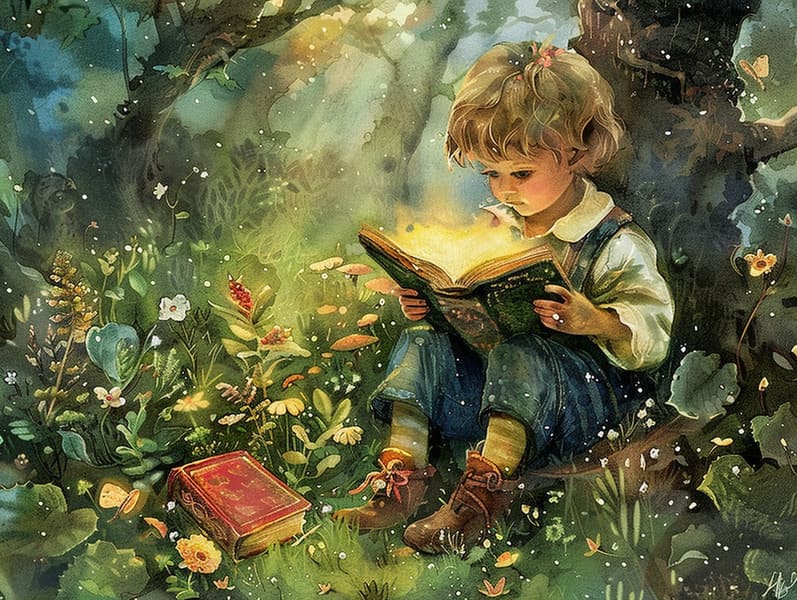The Formation of Short Fairy Tales and Its Everlasting Charm.
The Formation of Short Fairy Tales and Its Everlasting Charm.
Blog Article

Famous fairy tales have ancient roots. These stories have been conveyed from one generation to the next far before they were ever transcribed. They developed from a variety of traditions, including African traditions. They were initially narrated among grown-ups, often carrying themes and messages pertaining to the societal norms and beliefs of the time.
The famous Grimm duo, the two Grimm brothers, were among the first to gather and publish many of these beloved tales. Their volume, "Grimm's Fairy Tales," included classics like "The Little Glass Slipper," "Hansel and Grethel," and "The True Story of Snow White," which have since become staples in the world of classic fairy tales. Similarly, Andersen's imaginative stories, such as "The Little Mermaid," and "The Duckling's Story," have gained the love worldwide, guaranteeing their place in the pantheon of famous fairy tales.
Despite being ancient, these stories remain as pertinent as ever, especially as children's bedtime stories. These delightful tales are now available in numerous formats, including vibrantly illustrated books, fantastical animations, and web-based fairy tales.
Their lasting presence can be linked to several captivating elements:
Crucial Morals: Ancient fairy tales often provide important moral lessons. Narratives like "The Wolf and the Liar" teach the value of integrity, while "The Tale of the Tortoise and the Hare" show the merits of tenacity and modesty. These tales offer children clear distinctions between truth and falsehood, developing their moral compass in a soft yet impactful way.
Warmth and Understanding: Classic fairy tales frequently include protagonists facing difficulties and adversities, stimulating audiences to sympathize with their struggles and cheer for their triumphs. For instance, "Beauty's Beast" emphasizes the benefit of seeing beyond the surface to know the inner core of a being, advancing awareness and recognition.
Cultural Knowledge: Many traditional fairy tales are interwoven with the cultural contexts from which they blossomed. Engaging with these fairy tales can provide delightful insights into different social structures, nurturing a sense of world awareness and understanding.
Inventiveness and Fantasy: The supernatural elements in ancient fairy tales—mythical creatures—fuel children’s innovations. These stories carry readers to magical realms, generating imaginative thinking and a sense of wonder that persists a lifetime.
Classic fairy tales are not only fascinating but also teaching. They serve as fascinating tools in building various brain and heart skills in the young. When traditional fairy tales are told out loud, they enhance communication skills by teaching new vocabulary and sophisticated sentence structures. This practice also enhances hearing abilities and concentration, as little ones keep up with the story, anxious to see what happens next.
Furthermore, debating the themes and characters of classic fairy tales can sharpen intellectual skills and problem-solving abilities. Kids are shown to find patterns, forecast, and catch on to cause and effect. These conversations also promote little ones convey their thoughts and feelings, enhancing their emotional intelligence.
In today’s technological era, the presence of web-based fairy tales has made these tales more attainable than ever. Web platforms and web apps present vast collections of old fairy tales that can be seen or listened classic fairy tales on anytime, anywhere. Fairy tales voiced are particularly liked, providing an fun way for kids to immerse in these whimsical stories. Audiobooks and read-to-me stories move characters and settings to life, often complemented by enchanting music and background music that amplify the tale journey.
The lasting allure of timeless fairy tales lies in their ability to adapt to new eras while maintaining their key morals. Contemporary reinterpretations of these fairy tales often introduce more inclusive protagonists and modern settings, making them pertinent to today’s audience. However, the core values of spirit, sympathy, and even-handedness remain unchanged, continuing to move audiences of all ages.
Fairy tales also offer a sense of assurance and recognition. They disclose a well-ordered narrative with a plain beginning, middle, and end, often closing with the settlement of conflicts and the triumph of virtue over vice. This regularity can be comforting for young readers, affording a sense of invariability in an ever-changing world.
Traditional fairy tales continue to allure and teach new generations, maintaining their allure and significance in modern society. As kids' bedtime tales, they offer a perfect blend of allure and teaching, enriching moral values, empathy, and creativity. The accessibility of online fairy tales and the widespread nature of fairy tales read aloud affirm that these classic narratives remain reachable to new generations.
By guarding and disseminating these stories, we continue to glorify the rich tapestry of creativity and cultural heritage. Whether you are reading a artistically illustrated book, viewing a web-based collection, or listening on an audio story, the spell of ancient fairy tales is always within reach. These tales emphasize of the everlasting impact of storytelling and its ability to bind us across epochs and places.
No matter if you are perusing a artistically illustrated book, enjoying a web collection, or hearing an audio story, the beauty of classic fairy tales is always within reach.
These fairy tales demonstrate of the steadfast magic of storytelling and its ability to tie us across centuries and lands, weaving a spell that enchants and educates alike.